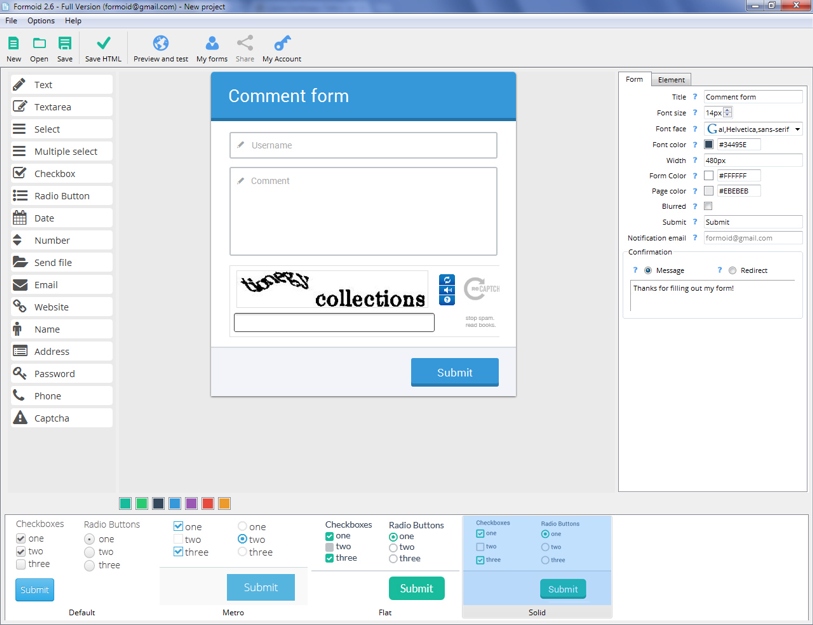
If none of the available frameworks powers your website, we provide a minimal version of Bootstrap 5 CSS to design your forms. If you use another framework, the configuration options will allow you to generate the appropriate HTML code. PHP Form Builder is conceived for use with the most popular frameworks: Bootstrap 4, Bootstrap 5, Bulma, Foundation, Material Design, Tailwind CSS, and UIKit. It allows you to program and layout all types of PHP/HTML forms using the Drag & Drop Form Builder or the built-in PHP functions. PHP Form Builder is a complete library based on a PHP class. So the above logic is flawed.Bootstrap 4 Bootstrap 5 Bulma Foundation Material design Tailwind UIKit But, as discussed, isset($data) will also return false if $data was set, but was set to null.

Online php mysql web form builder code#
The author of this code presumably wanted to check if keyShouldBeSet was set in $data. do something here if 'keyShouldBeSet' is not set This behavior is more problematic than it might appear at first and is a common source of problems.Ĭonsider the following: $data = fetchRecordFromStorage($storage, $identifier) Unset($value) // $value no longer references $arrĬommon Mistake #2: Misunderstanding isset() behaviorĭespite its name, isset() not only returns false if an item does not exist, but also returns false for null values. To still get the benefit of using references in foreach loops without running the risk of these kinds of problems, call unset() on the variable, immediately after the foreach loop, to remove the reference e.g.: $arr = array(1, 2, 3, 4)

Pass 1: Copies $array (i.e., “1”) into $value (which is a reference to $array), so $array now equals 1.As a result, here’s what happens during each step of the second foreach loop: Specifically, since $value is now being accessed by value (i.e., by copy), foreach copies each sequential $array element into $value in each step of the loop. The last value on the last line is indeed a 2, not a 3.Īfter going through the first foreach loop, $array remains unchanged but, as explained above, $value is left as a dangling reference to the last element in $array (since that foreach loop accessed $value by reference).Īs a result, when we go through the second foreach loop, “weird stuff” appears to happen. The above code will output the following: 1,2,3 Here’s an example of the kind of evasive and confusing bugs that this can lead to: $array = įoreach ($array as &$value) // by value (i.e., copy) After the loop completes, therefore, $value still points to the last element of $array and remains in scope. On each iteration foreach sets the reference to point to the next element of $array. Thus, $value in the above example is a reference within the top scope of the script. The main thing to remember is that foreach does not create a scope. Subsequent operations involving $value could therefore unintentionally end up modifying the last element in the array. Specifically, in the above example, after the code is executed, $value will remain in scope and will hold a reference to the last element in the array. The problem is that, if you’re not careful, this can also have some undesirable side effects and consequences.
Online php mysql web form builder how to#
Not sure how to use foreach loops in PHP? Using references in foreach loops can be useful if you want to operate on each element in the array that you are iterating over. Common Mistake #1: Leaving dangling array references after foreach loops This article highlights ten of the more common mistakes that PHP developers need to beware of. But its ease of use notwithstanding, PHP has evolved into quite a sophisticated language with many frameworks, nuances, and subtleties that can bite developers, leading to hours of hair-pulling debugging. PHP makes it relatively easy to build a web-based system, which is much of the reason for its popularity.


 0 kommentar(er)
0 kommentar(er)
